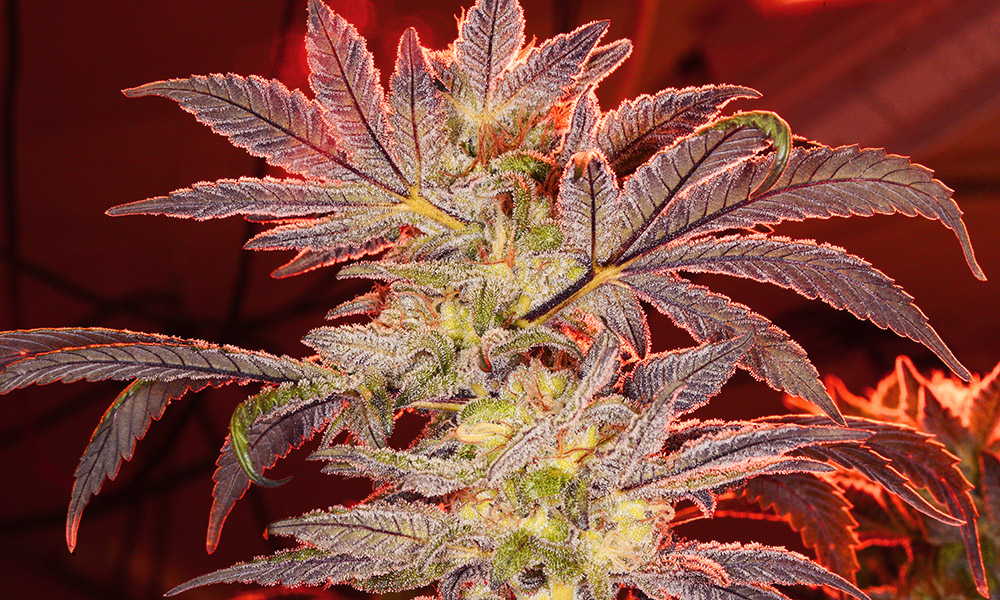
Legal
The Long and Winding Road to Cannabis Legalization in Montana
Voters in Montana passed ballot measures calling for the legalization of adult-use cannabis, but there was a pre-emptive attempt in the state legislature to repeal the effort before it even passed. Montana’s road to legalization has been a long and twisted one, and there may be further political fights ahead.
In a victory that was a long time coming for cannabis advocates in Big Sky Country, Montana voters approved twin ballot measures mandating legalization and establishment of an adult-use market in the state last week.
Constitutional Initiative No. 118, which was approved by nearly 58%, amends the state constitution, allowing the Legislature to set a legal age for purchasing or possessing cannabis. This, in turn, permits the terms of Initiative 190, which passed by not quite 57%. This will allow those over the age of 21 to possess up to an ounce of cannabis or eight grams of cannabis concentrate. It also allows individuals to grow up to four plants for personal use. Regulated sales are to be permitted, with non-medical cannabis to be taxed at 20% of retail price.
As the Great Falls Tribune notes, the promoters of I-190 say it will generate up to $48 million annually in tax revenue and licensing fees by 2025. Just over 10% of the revenue will go into the general state fund, with the remainder “dedicated to accounts for conservation programs, substance abuse treatment, veterans’ services, health care costs and localities where marijuana is sold,” according to the text of the measure. Individual counties will be allowed to prohibit dispensaries. Advertising will be barred statewide.
Those currently serving prison time for “an act permitted by I-190” will be able to apply for resentencing or expungement of the conviction.
Threat of Repeal
Under the terms of I-190, the Montana Marijuana Regulation & Taxation Act is to take effect no later than Oct. 1, 2021, the deadline for the Department of Revenue to establish oversight regulations and begin accepting applications for dispensaries. Sales are projected to start in January 2022, but there could be political roadblocks between now and then.
The Great Falls Tribune reports that the legalization push was spearheaded by New Approach Montana, which spent over $140,000 on signature-gathering efforts to get the initiatives on the ballot. They were opposed by the Wrong for Montana coalition—which is backed up by the Montana Chamber of Commerce, Montana Bankers Association, Montana Contractors Association and other pillars of the state’s establishment. Opposition to I-190 also received support from the national anti-legalization outfit Smart Approaches to Marijuana.
These opponents sought to fend off the twin initiatives before they even passed. Two weeks prior to the election, Wrong for Montana and its founder, Billings car dealer Steve Zabawa, went to the state Supreme Court, seeking to block I-190 on a narrow technicality – that only the Legislature can earmark tax revenues. The court turned them down, finding that the legal team did not demonstrate sufficient urgency to skip over the usual trial and appeal process. However, the court did not rule on the merits, which means a case against implementation of I-190 could still be brought forth.
Earlier in October, a group of Republican legislators drafted a bill to preemptively repeal I-190. Rep. Derek Skees of Kalispell, chief drafter of the bill, agreed to withdraw the repeal after the vote in light of the initiative’s easy passage. “Say 51%, then that bill would’ve been a good idea, because then it would’ve allowed us to say, ‘Well, listen, Montanans are a little confused on this. Not everybody was really for it,'” Skees told NBC Montana.
When asked if a repeal might be an option in the future, he responded, “The only branch of government in this state dumb enough to overturn citizens’ initiative is the Supreme Court, which has done it repeatedly.”
The expansion of cannabis freedom in Montana has been met with heavy resistance though, and this gives cause for concern.
Déjà vu in Big Sky Country
For longtime Montana cannabis activists, there was a sense of déjà vu to the efforts to head off legalization in the high court and statehouse.
Montana voters approved medical marijuana in a 2004 initiative, I-148, which passed by a handy 60%, but a backlash was sparked by an explosion in the number of registered users as the medical sector began to take off. In 2010, the number jumped from about 1,000 users to more than 25,000 statewide, with some businesses operating out of traveling “caravans” that quickly diagnosed people for maladies that could be treated with cannabis. There were even arson attacks on dispensaries in Billings that spring.
The following year, legislation was introduced to rein in the program and overturn the terms of the 2004 medical cannabis initiative. Montana’s then-Democratic Gov. Brian Schweitzer once vetoed such a bill, but finally relented in April 2011, and allowed the bill to take effect without his signature, under a special provision of the state constitution.
The new legislation limited providers to no more than three patients each, barred them from receiving compensation, and imposed other restrictions, including a ban on advertising. After the law was passed, registered users rapidly dropped below 12,000.
The Montana Cannabis Industry Association challenged the new law as an unconstitutional restriction on their business. The Montana Supreme Court ruled against them in September 2012, finding that there is no fundamental right to cultivation, distribution or use of medical marijuana. The high court sent the decision back to Helena district court, instructing it to use a “rational basis” instead of a “strict scrutiny” test to determine whether the law would pass muster. The “strict scrutiny” test places a heavier burden on the state to justify a law, requiring a compelling state interest. A “rational basis” review is the lowest level of scrutiny a court can apply, only requiring a law to be rationally related to a legitimate state interest.
Advocates also sought to put the issue to the voters again, but in a ballot initiative that November, the state voted to keep the more restrictive measures.
The litigation wound its way back through the appeals process and ended up before the state Supreme Court again in 2016. That February, the high court upheld provisions of the restrictive 2011 law, finding them a “rational response” to the dramatic increase in users. In one victory for the state’s burgeoning cannabis industry, the provision that banned providers from receiving compensation was struck down. There was fear of widespread closure of dispensaries.
But the situation was salvaged that November when voters approved Initiative 182 – a second and successful attempt to reverse the restrictive provisions of the 2011 bill.
Another advance came last year when the Legislature approved a bill to “untether” medical marijuana users, allowing them to purchase from more than one dispensary or “provider.” The “untethering” took effect this June.
There are currently 38,385 people enrolled in the Montana Medical Marijuana Program.
Protecting the Will of the Voters
Ryan Saghatelian is the owner of Greener Pastures, a dispensary which opened in Bozeman in 2008 and now also has outlets in Missoula and Big Sky. Reached by Cannabis Now, he spoke of his plan to expand from the medical to the “recreational” market.
“We’ll be applying as soon as we can,” he said in a phone interview, noting that approval from the Revenue Department for recreational sales will be needed on top of the company’s existing approval for medical sales from the state Department of Public Health.
“It’s looking like it’s going to work in concert, with medical and adult use existing side by side,” he said. “This is probably a good thing, because the taxes are only 4% on the medical side. It would be great for those people who really need it to get the tax break.”
In contrast to the medical market, adult-use sales will not be restricted to state residents.
“We would like to do both – keep our medical patients happy and bring our products to a larger market, including the many tourists and visitors we get every year,” Saghatelian said, adding that with Montana’s “great outdoors” emphasis, tourism is still thriving despite the coronavirus pandemic.
Saghatelian also notes that the recreational law will allow contracting and wholesale opportunities in addition to retail sales. “We’d love to supply edibles and concentrates to smaller providers that don’t want to deal with production,” he said, adding that it also benefits the consumers, as they will have more options to choose from.
While outdoor growing is permitted in Montana, Saghatelian says that the state’s early frosts and short growing season are “not for the faint of heart.” Meanwhile, he boasts that Montana has “some of the best indoor in the country.” Bozeman and Missoula have emerged as centers of cultivation.
Saghatelian considers the seeming irony that his state voted for Republican candidates up and down the ballot on Nov. 3. “It’s kind of interesting how red the vote was in Montana, and yet there was overwhelming support for marijuana legalization. There’s a kind of libertarian element, even among the state’s conservatives,” he said.
“I just hope the lawmakers don’t go back on the will of the voters in the spring,” Saghatelian concludes. “I hope they don’t whittle the law down so much that it’s worthless…We need to stay vigilant as voters to make sure that our lawmakers respect our wishes.”
























